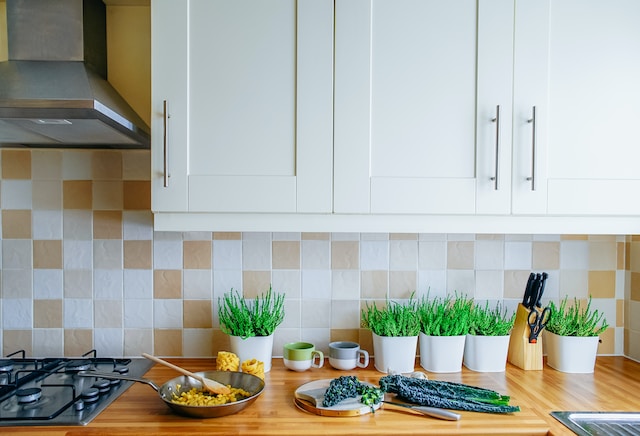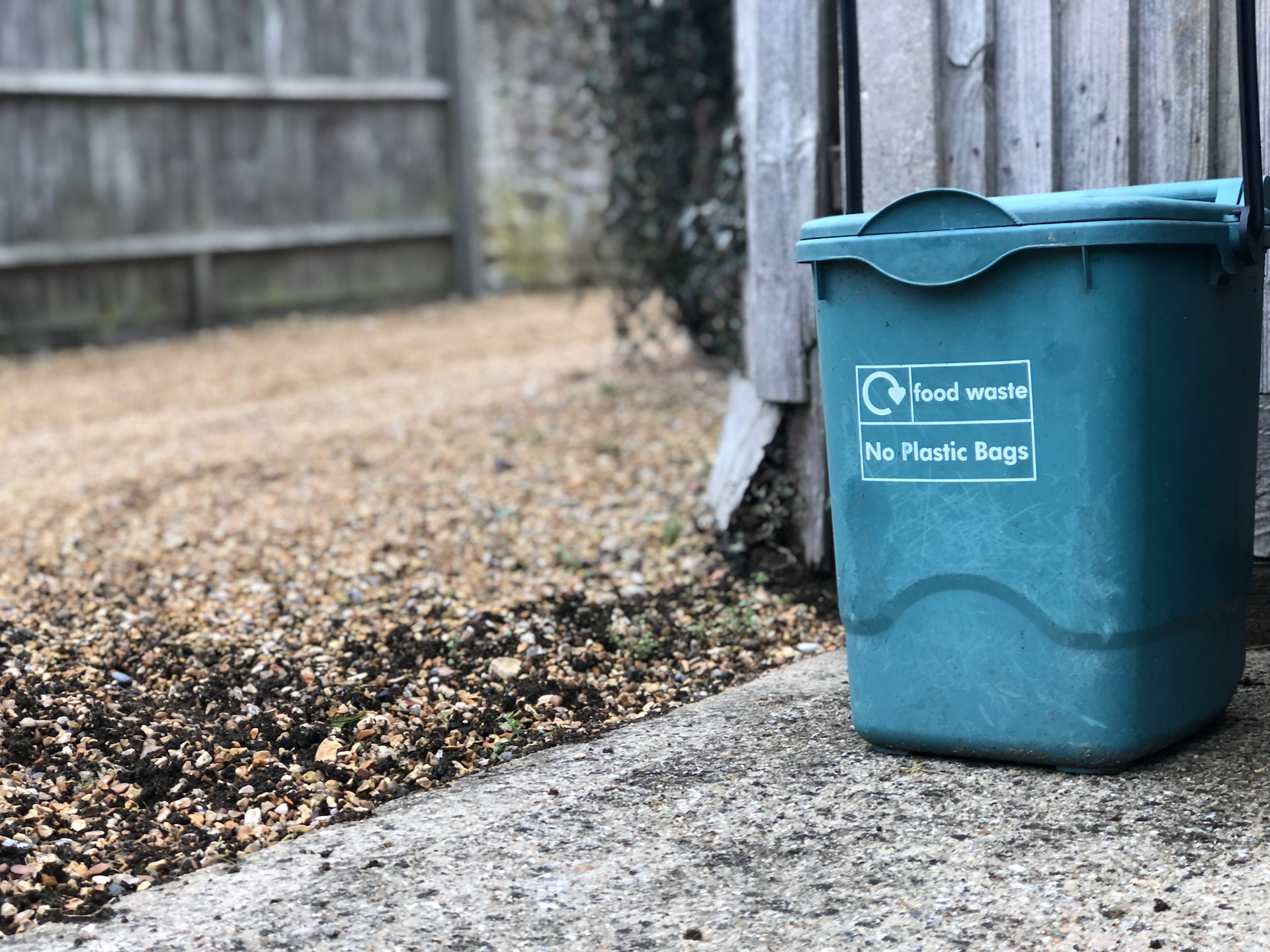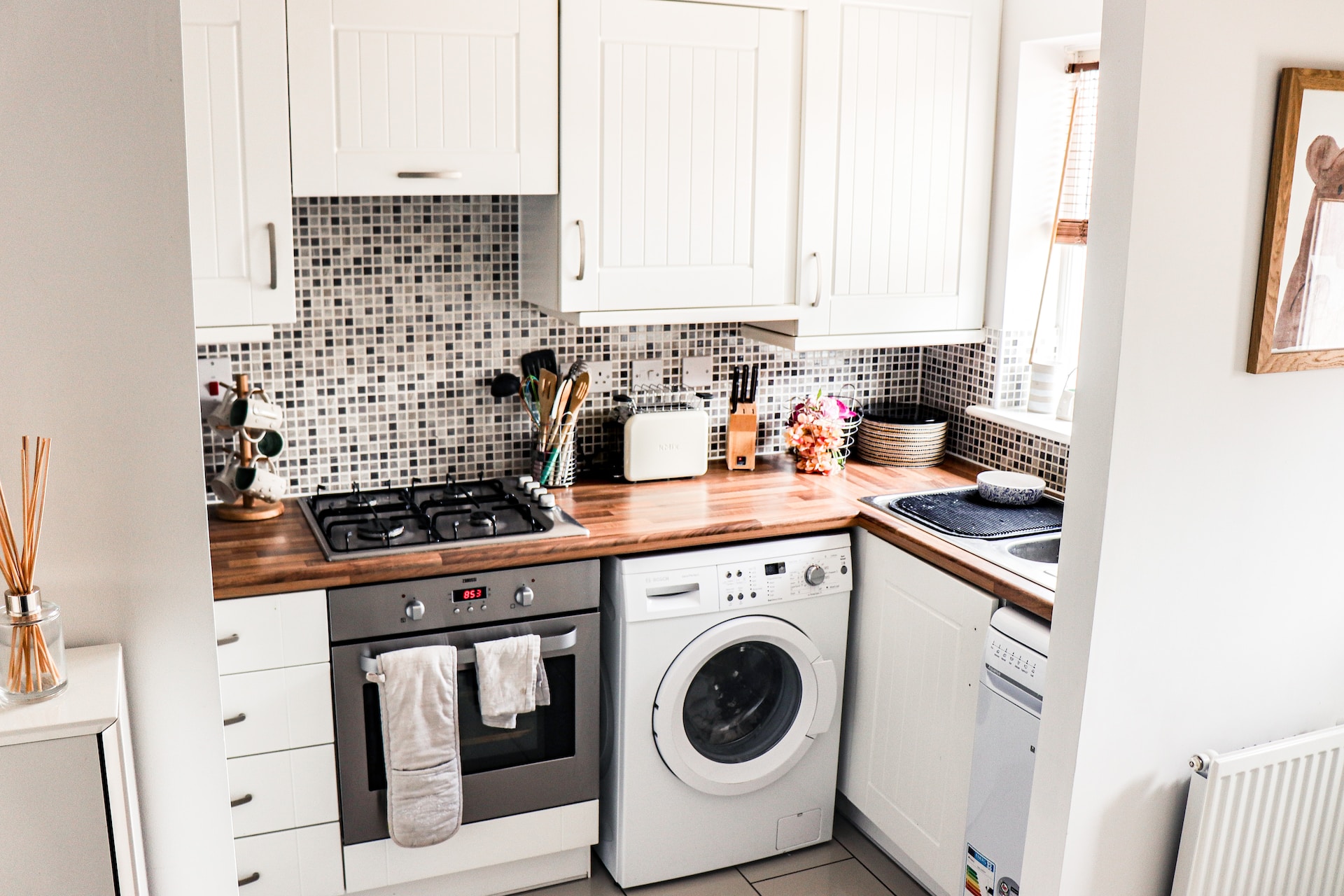Food waste is a pressing global issue that contributes to environmental problems and economic inefficiency. While it may seem like an overwhelming problem, there are numerous intelligent solutions that can be implemented at home to make a significant impact.
We’ve rounded up the best experts on food waste management and sustainability to help guide home cooks to a more sustainable lifestyle. From practical tips on portion control to creative recipes that repurpose leftovers, our experts share insights that empower individuals to minimize waste in their kitchens.
How can individuals reduce food waste in their daily lives, and what are some practical tips you would recommend?
Planning, flexibility, and creativity are the keys to reducing your food waste.
Start by setting yourself up for success. take a look at what you already have in your fridge and pantry. Get those spaces organized so that you can see what you’ve got and what needs to be used up first. With those items in mind, use a cookbook or trusted website to meal plan. Create a shopping list and stick to it. You’ll save money and avoid cluttering up your kitchen with items that you don’t have a plan to use.
Proper storage plays a huge part in reducing food waste. Learn how to best store fruits and vegetables to make the most of their shelf lives. After meals, label and save leftovers in the fridge or freezer to reheat or incorporate them into new dishes. Try using a “first in, first out” method to prioritize what needs to be eaten first and what will last a bit longer.
Practice recipes like soups, salads, and stir-fries that make it easy to substitute ingredients to use what you’ve already got. If you’re hosting people, find out what people want and ask that folks don’t bring dishes that won’t be eaten.
No matter how much preparation you make, there will almost always be some food that doesn’t get eaten. To ensure that those items don’t find their way into a landfill, start composting. There are a number of ways to compost, so figure out what will work best for you and get started. By incorporating these strategies, you’ll not only minimize food waste but also make a positive impact on your budget and the environment.
Paul Green at MakeFoodNotWaste.org
How can you prevent food waste at home?
Food waste is a significant issue in many countries, and it is important to take steps to reduce it. Here are some tips to prevent food waste at home:
- Plan meals and snacks in advance, make a list, and buy food according to it to reduce overbuying and wasting food.
- Store foods properly in the fridge or pantry to extend their shelf life. Keep fruits and vegetables in separate drawers in the fridge, and store dry goods in airtight containers.
- Freeze food such as bread, sliced fruit, meat, or leftovers that you know won’t be eaten in time. Label with the date and use within a reasonable time frame.
- Cook the exact amount you need or designate a “Leftovers Night” once per week to clean out the fridge. Pack leftovers for lunch or freeze them for later use.
- Composting is a great way to keep food waste out of landfills. Backyard composting is an option if you have a backyard or patio, but many municipalities also run composting programs.
- Consider buying “ugly” fruits and vegetables to reduce food waste. Imperfect produce is often thrown out, but it is still edible.
- Use scraps such as peels, rinds, and shells to make stocks and broths. Vegetable scraps can also be used to make compost.
By following these tips by the Registered Dietitians at Health Stand Nutrition Consulting, you can reduce food waste at home and save money in the process. Remember, even small changes can make a big difference in reducing food waste.
Health Stand Nutrition Consulting Inc.
How do you recommend individuals and households get started on their zero-waste journey and reduce food waste?
If you’re at the outset of your journey with reducing food waste in your home, the best thing I can recommend individuals do is acquire a personal kitchen compost bin. A small compost bin for your kitchen, preferably with a zero-waste, charcoal-style filter, can be kept under your sink near your trash or even on your countertop near your sink. Compost bins like these give you an alternative way to dispose of food bi-products that you don’t plan to use for any other purpose. Banana peels, eggshells, and coffee grounds all make great compost– they break down naturally and, if you are interested in gardening, will nurture your garden’s soil.
Another strong way to tackle food waste is saving vegetable discards and peels, for stocks! When cooking at home, do your best to save onion and carrot peels, celery greens, and parsley stems! I opt for a Ziploc or cloth bag in my freezer full of these veggie scraps, and when it comes time to make stock, I simply fill my pot full of them, cover them with water, add a few peppercorns and bay leaves, and simmer it for a few hours. This is a wonderful way to add flavor to soups and sauces, as well as reduce the amount of food you throw away!
Brian Twilegar at Zero Waste Outlet
What are some common misconceptions about food waste, and how can we educate people about the issue?
In the United States, about half of all food produced is wasted. That’s enough food to feed another entire US American population! Although much of this waste happens in the hands of the food industry and farms, there’s a lot of waste on our hands too.
About one-third of all food waste happens in our own homes. We can all do something about that!
Many people think that food is unsafe to eat after the date on the package, but that’s rarely the case. “Suggested sell-by” date is just a suggestion, and “best-by” is not bad. Let’s use our senses with our food rather than just read the numbers.
Many companies toss out perfectly edible produce simply because it doesn’t fit their cosmetic standards. Together, we can ask for “ugly produce” that’s still perfectly good- just a bit of a different color, shape, or size than many of us are used to.
If food does go to waste, we can compost it. A huge portion of our landfills are filled with food that can not properly biodegrade in landfills and instead emits methane gas, which is 25 times more potent a greenhouse gas than carbon dioxide.
And, of course, we can opt out of the global, industrial food system by growing our own food and foraging, too!
Robin Greenfield at RobinGreenfield.org
What are some of the most important things individuals can do to help reduce food waste and make a positive impact on the environment?
Globally, an estimated one-third of all the food we produce is lost or wasted between farm and fork each year. That’s 1.3 billion tonnes of food that is never eaten.
As much as we love our food, we waste a lot, and it usually comes down to a couple of things, such as over-buying and a lack of knowledge on how to store our food properly to ensure we make it last as long as possible.
At an individual level, there are plenty of things we can do to reduce food waste in our homes, which ultimately will save money, food, and the planet!
To help make the most of your food and prevent it from ending up in the bin, Love Food Hate Waste NZ has compiled five top tips to reduce food waste and protect the environment:
1. Planning is key – Write a shopping list
Resist the urge to overbuy and aimlessly wander the supermarket by writing a shopping list and checking what’s already in the cupboard. This will help you avoid doubling up on ingredients and is one of the easiest ways we can reduce food waste. Hot Tip: Take a photo of the list on your phone so if you forget that pesky piece of paper, you are covered in the shops.
2. Portions – be realistic
Think about how many people you will be cooking for and how much they will be likely to eat. Remember, young children aren’t going to need as much food as adults. Meals don’t need to be about the amount of food or perfect presentation – it’s about spending quality time together.
3. No matter how small your leftovers are, don’t throw them away
You may think it’s not worth it to keep the last few spoonfuls of something, but it all adds up. Use your leftovers in your next meal, or freeze them until you have enough to make something larger, like soup, pizza, or stir-fry. Leftover rice can be used for fried rice and rice pudding, while vegetables can be used in soup or stews.
4. Use your freezer
This may sound straightforward, but did you know almost everything can be frozen? If you find yourself making an extra trip to the shop just to buy milk, keep a bottle in the freezer. Is there a great two-for-one special at the supermarket? Freeze the second item until you need it. And, if you find your fruit or vegetables tend to go bad before you can eat them, partially cook them and then store them in the freezer.
5. Sort out your storage
It’s important that you put your food in the right place so that it doesn’t spoil. Bread should be kept in the fridge or freezer so it doesn’t grow mold. The majority of your apples and other fruit should be kept in the fridge, with just a small selection in the fruit bowl – but keep them away from bananas! Potatoes and onions shouldn’t be stored next to each other as they will both go off faster. Check out more storage tips from Love Food Hate Waste NZ here.
Love Food Hate Waste – New Zealand
What are the most effective strategies for reducing food waste at the household level?
The simplest way to cut down on wasted food is to stop buying so much! People think when they go grocery shopping, they have to buy enough food to last an entire season! The truth is, if you’re buying EXACTLY what you need, you never waste a significant amount of food. You eat what you buy-it’s as simple as that. If you’re into zero-waste, then make sure you have compost for food scraps so NO food makes its way to the landfill to sit, rot, and fill our air with stinky poisonous gases. That’s what I do!
Ted Sanderson, Operations Manager – Texoma at Frontier Waste Solutions
How can I reduce food waste in my daily life?
To reduce food waste in your daily life, you can take the following steps:
- Compost Food Scraps: Instead of throwing away food scraps, you can compost them to give nutrients back to the soil and reduce your carbon footprint.
- Organize and Structure Meals: Organizing and structuring meals may save significant amounts of time in the long run and help reduce food waste.
- Bring Food from Home: When on the go, bring food from home to avoid food waste.
By implementing these additional steps, you can further contribute to reducing food waste in your daily life.
How can people ensure that they are using their food storage containers in a way that minimizes food waste?
First In, First Out (FIFO) Method: This is a simple yet highly effective principle used in professional kitchens but just as applicable at home. By organizing your storage containers so that the older items are placed in front, you ensure that they are used first. This method is particularly useful for perishable items like dairy, meat, and vegetables. It requires a bit of discipline to rearrange items each time you buy new groceries, but the payoff is significant in reducing food wastage.
Freeze with Care: Many people underestimate the power of their freezer. Freezing food can extend its shelf life remarkably. The key here is to freeze foods in portion-sized containers and clearly label them with the date of storage. This approach is especially helpful for bulk purchases or when you have leftovers. Remember, not everything freezes well, so it’s good to know which foods are freezer-friendly. For instance, cooked grains, bread, and many cooked dishes freeze well, while high-water content vegetables and certain dairy products do not.
Versatile Ingredients: The art of using versatile ingredients cannot be overstated. By storing ingredients that can be used in multiple dishes, you give yourself the flexibility to adapt your meal plans based on what needs to be consumed first. Ingredients like rice, pasta, beans, certain vegetables (like bell peppers and carrots), and proteins like chicken or tofu, can be turned into various meals. This approach not only minimizes waste but also enhances your culinary creativity.
Valentino Chiavarini, Founder and CEO at GreenHive.io
What are some common mistakes people make when storing food that lead to waste?
In the culinary world, the overlooked art of maintaining an organized fridge is a common pitfall. When items get lost or forgotten, it’s not just a matter of disarray; it leads to unnecessary waste. Forget those airtight containers, and you risk premature spoilage, a culinary tragedy in its own right.
Understanding the optimal storage conditions for diverse foods is key to minimizing this kitchen drama. By cultivating awareness and embracing improved storage practices, we can make strides in reducing food waste right in our own homes, and speaking of excess, why not share the culinary wealth?
Gather your friends and reach out to folks in your community who could benefit through our Free Food Sharing App at Feed It Forward. Download it from the app store, create a profile, and dive into a world where surplus delights from local businesses, restaurants, and individuals are just a few taps away!
It’s a culinary community connecting those with extra food to those in need, making a real impact in the fight against food waste.
Chef Jagger Gordon at FEEDITFORWARD.ca
How can we extend the shelf life of fruits and vegetables to reduce waste?
Making the most of your grocery haul while being environmentally conscious is a win-win! To maximize the shelf-life of your fruits and vegetables, it’s important to understand their specific storage needs. High humidity is ideal for some, while others thrive in low-humidity environments. Take advantage of your refrigerator’s humidity drawers for optimal freshness. Extend the life of leafy herbs by storing them in a jar with water in the fridge. Additionally, creating an “eat me first” section in your refrigerator ensures that items with a shorter shelf-life are prioritized. For tailored advice on storing specific produce, check out this fantastic resource: SavetheFood.org Happy saving and savoring!
Edwin Mendoza at I Love A Clean San Diego
What are some examples of upcycled foods that can be easily incorporated into a home-cooked meal?
Upcycling in your home is all about using scraps and leftovers to create new, delicious food. Here are a few ideas to make the most of all the food in our kitchens!
- Use leftover parmesan rinds in soups and sauces for added flavor.
- Use leftover oats from making homemade oat milk to make oatmeal cookies.
- Make a master stock! You can use almost anything – Carrot ends, celery butts, chicken carcasses, garlic or onion skins. Just save the food scraps in your freezer for when you are ready to use them for your stock.
- Upcycle your banana peels to make banana jerky. Just use a spoon to scrape off the white inside, then marinade the peels in soy sauce, maple syrup, and spices before dehydrating.
Angie Crone at UpcycledFood.org
How can individuals and families incorporate a more sustainable diet to reduce food waste at home?
Everyone’s circumstances are different, but at a foundational level, meal planning is a great practice and first step to combat food waste at home. Plan your meals for the week before grocery shopping to avoid overbuying. Consider batch cooking and freezing meals for later use.
Donate usable excess food. Shelters and food banks often accept packaged foods near their best-by date to distribute. There are some great apps on the market that offer affordable or even free pickup at your home.
For those already practicing this method, I would consider getting an electric composter for your kitchen. Composting food scraps instead of throwing them in the trash reduces landfill waste and creates nutrient-rich compost for your garden.
How can people encourage their friends and family members to reduce food waste and adopt more sustainable food habits?
Two basic questions come into play when encouraging others to adopt more sustainable food habits: the how and the why? Knowing what your friends and family care about is key. Reducing food waste solves a variety of challenges. Do your friends and family value saving money and saving time? Is conserving natural resources and protecting the environment a priority? Or are they community-driven? Good food is recovered on a daily basis and made available to support people in our communities.
Sharing what you are learning with your friends and family as you are learning it helps to improve their food saving habits. For decades, as soon as my eggs reached the sell-by date, they were destined for the trash. My mind was blown to learn eggs are still fresh up to 3 weeks beyond the Sell By Date. Once I learned the “egg test” could help determine freshness beyond that date, I had to share it with everyone.
The NRDC’s SavetheFood.com is an incredible resource with an abundance of proper food storage, meal planning, and recipe tips. Wondering if a food item is still good to eat? Rachael Jackson’s Eat or Toss website contains a database of images of confusing food situations, along with quick, science-based explanations of why you should eat or toss the food item.
Research shows that “using what we already have” is one of the easiest and most effective ways to reduce food waste. While whipping up a meal based on what we already have in our refrigerators can seem daunting to many of us, there is help out there. Chef Alison Mountford’s Ends and Stems website includes a recipe finder in which two ingredients can be entered to reveal a wide range of recipes.
The bottom line is conserving food is an underrated solution that can solve a myriad of challenges. While conserving food was second nature to many of our grandparents, it is something we have to learn. Within our community of friends and family and all the valuable resources out there, saving food can become a daily habit.
Elaine Fiore at Food Waste Prevention Week
What are some ways to get kids involved in reducing food waste?
Encouraging kids to participate in reducing food waste can be an engaging and educational experience. To involve them in this initiative, you can employ interactive methods that teach the importance of minimizing waste while nurturing their creativity:
1. Meal Planning Adventures: Engage kids in planning meals for the week using ingredients already available at home. Encourage them to create exciting recipes and make grocery lists to reduce overbuying.
2. Kitchen Superheroes: Transform kids into kitchen superheroes by involving them in meal preparation and cooking. Teach them how to use leftover ingredients creatively, turning surplus veggies into colorful stir-fries or fruit into homemade popsicles.
3. Garden-to-Plate Fun: Cultivate a small garden together, showing how to grow herbs or vegetables. Kids can learn about the effort it takes to produce food and appreciate the process from seed to plate, reducing the likelihood of wasting homegrown produce.
4. Waste-Sorting Challenge: Make waste sorting a game by having them distinguish between compostable, recyclable, and non-recyclable items. This hands-on activity helps them understand the impact of different waste disposal methods.
By incorporating these fun and educational activities, kids not only learn valuable lessons about reducing food waste but also develop a lifelong appreciation for sustainable practices.
Patrick Gunther at PlushBeds.com
How can people ensure that they are using their food storage containers in a way that minimizes food waste?
First In, First Out (FIFO) Method: This is a simple yet highly effective principle used in professional kitchens but just as applicable at home. By organizing your storage containers to place the older items in front, you ensure they are used first. This method is particularly useful for perishable items like dairy, meat, and vegetables. It requires some discipline to rearrange items each time you buy new groceries, but the payoff significantly reduces food wastage.
Freeze with Care: Many people need to pay more attention to the power of their freezer. Freezing food can extend its shelf life remarkably. The key here is to freeze foods in portion-sized containers and clearly label them with the storage date. This approach is especially helpful for bulk purchases or when you have leftovers. Remember, not everything freezes well, so knowing which foods are freezer-friendly is good. For instance, cooked grains, bread, and dishes freeze well, while high-water content vegetables and certain dairy products do not.
Versatile Ingredients: The art of using versatile ingredients cannot be overstated. By storing ingredients that can be used in multiple dishes, you give yourself the flexibility to adapt your meal plans based on what needs to be consumed first. Ingredients like rice, pasta, beans, certain vegetables (like bell peppers and carrots), and proteins like chicken or tofu can be turned into various meals. This approach not only minimizes waste but also enhances your culinary creativity.
Valentino Chiavarini, Founder and CEO at Green Hive
How can composting benefit the environment?
There is no “waste” in nature. Dead plants and animals feed the ecosystem they are a part of as their nutrients are diffused through the trophic levels and back into the earth, ready for new growth. In opposition to this, the breakdown of food wastes in the waste stream is one of the leading causes of methane emissions from landfills. This powerful greenhouse gas is nearly 30 times more potent than carbon dioxide and is a major contributor to the environmental impact of landfills. By separating these materials and properly composting food scraps, these emissions are avoided, and the nutrients that would have otherwise rotted away are captured and re-used in our communities’ soils! Farms and gardens (and even houseplants) that utilize compost for nutrients benefit greatly from a fertilizer that stays within the soil, feeding the local mycelium and microorganisms that create healthy soils for the plants we grow and consume. Traditional fertilizer requires large energy inputs to produce and eventually runs off into our lakes, rivers, and streams, causing algal blooms and undesirable consequences. Utilizing compost removes the negative impacts of food waste from our environment. It adds valuable water retention and nutrients to our soils, providing us with healthy food, all while removing the need for harmful chemical inputs into our environment. It’s all a cycle, and composting keeps us a part of it!
What are the basic steps and materials needed to start composting at home?
Composting at home is an enjoyable and simple way to divert food waste from landfills, playing a crucial role in reducing methane emissions from anaerobic digestion. It’s an effective method to shrink your environmental footprint while producing nutrient-rich compost for your garden. Start by collecting kitchen scraps in a small bin stored in your fridge or freezer to prevent unpleasant odors. When full, transfer it to your backyard composting station, which can be an open or closed container based on your setup. Maintaining good ratios, such as a wet-dry or carbon-nitrogen ratio, is key. Add ample dry (carbon) materials like leaves, newspaper clippings, straws, and sawdust to your food scraps (nitrogen). Regularly mix your compost, ensuring organic matter does the rest. Happy composting!
Kristin Anderson at IdeasForUs.org
How can composting be incorporated into daily routines?
Bokashi composting is changing the way many people compost their food waste. The majority of the Bokashi process happens in the convenience of your own kitchen, making it really easy to fit into your daily routine.
No more trudging out to the bottom of the garden, simply add your food waste to the bokashi kitchen composter and sprinkle with bokashi bran. All food waste can go into your bokashi composter. Fruit, vegetables, cooked food, meat, dairy, grains, and pasta are all fine. No awkward separating of food waste types. if you eat it, it can go in the bokashi bin!
Repeat until your bokashi bin is full. Then, seal the lid and leave for 2 weeks to complete the fermentation process.
Bokashi composting uses garden-friendly microbes inoculated into the bokashi bran to ferment your food waste.
In as little as 2 weeks, your food scraps have been transformed into microbe and nutrient-rich pre-compost and are ready to add to your garden. You can bury directly in your garden beds, compost piles, potting containers, or soil factory.
How can compost be utilized for various purposes in a home setting?
Composting is a natural process of recycling organic matter, such as food scraps and yard trimmings, into a valuable fertilizer that can enrich soil and plants. Composting can be done at home using food scraps from the kitchen and dry leaves and woody material from the yard. Finished compost is a nutrient-rich soil amendment that can be used in various ways in a home setting. Here are some ways to utilize compost in a home setting:
- Mulch: Compost can be used as mulch to prevent evaporation and weed growth. Apply in a 3 to 6-inch layer and rake until even.
- Potting soil: Finished compost makes an excellent addition to homemade potting soil. Remove large debris by passing compost through a half- to 1-inch soil screen. Mix in the following proportions: 1 part compost, 1 part sand, and 2 parts loam.
- Compost tea: Compost tea is a liquid fertilizer made by steeping compost in water. It can be used to water plants or sprayed on leaves.
- Fertilizer: Compost can be used as a slow-release fertilizer for general planting. Use 20% compost with 80% potting soil for general planting.
- Soil amendment: Compost can be mixed into soil to improve soil health and plant growth. Spread up to a 1/2 inch layer over a seeded bed or on the lawn.
It is important to note that compost should be at least four to six months old before using it with plant seedlings. Additionally, it is important to use the correct amount of compost to avoid root burn and other issues.
More strategies for minimizing food waste in your home
One of the easiest and most powerful actions to reduce food waste is to prevent it from happening in the first place. A home warranty plan can help reduce food waste by providing coverage for appliances such as refrigerators and freezers, which can help keep food fresh for longer periods.
Additionally, composting at home is a resourceful way to recycle food scraps and yard trim generated at home all year and manage waste more sustainably. By turning food scraps and yard trim into compost, households can transform their waste streams into a beneficial, value-added soil amendment and use it to protect the environment.

By adopting sustainable practices, individuals can reduce their consumption, find creative ways to reuse food before discarding it and employ proper food disposal techniques. These everyday changes can lead to a substantial reduction in the volume of discarded food, contributing to a more sustainable lifestyle. Not only does effective food waste management benefit the environment, but it can also lead to significant savings on grocery bills. By learning how to make ingredients last longer, utilize them more efficiently, and properly dispose of them, families can make a meaningful difference in the long run.




